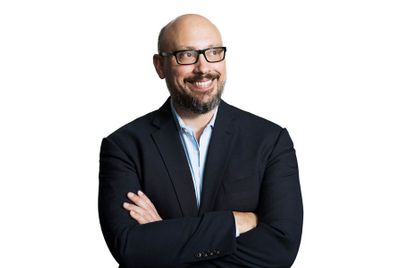
This may come as a surprise to many, but I must say that the most engaged users of platforms that I personally know of are my older relatives. And it’s not even close. Every morning, a quick check of my phone shows at least a couple of WhatsApp notifications from the family chat group, discussing current affairs or sharing a funny story. Likewise, their social-media feeds are amongst the most active, constantly abuzz with images of recent holiday trips and YouTube posts, alongside opinions about the latest social and political issues.
All in all, they live a truly vibrant and colourful online life—one that marketers seem unable to decipher or even acknowledge. This is despite the fact that elderly consumers represent a market that is worth billions and still growing at a staggering pace.
But, how do we even begin to tap into this unfamiliar market segment? Well, we can start by talking to them and listening earnestly to what they have to say, and we have to understand a few simple things.
They’re not change-resistant, they’re bulls**t-resistant
Recently, the screen on my mom’s iPhone 3GS died, and she went ahead and had it fixed at a neighbourhood phone repair shop. “Mom” I berated her, “you could have bought a brand new phone for a little more than the price you spent on the repairs.” This baffled her. Why would the premium, state-of-the-art phone she paid S$1,000 for barely five years ago be considered obsolete already?
At that moment, I could have pointed towards the improvements in screen and camera resolutions, fingerprint sensors and faster processors, and at least a dozen other reasons why. But I didn’t, because I realised right then, that even if she had in her possession the latest, greatest, flashiest phone on the market, she’d still be using it the exact same way she’s been using her trusty old 3GS all these years. Happily surfing the web, browsing pictures of her grandchildren on Facebook, and messaging family and friends every now and then—just like the rest of us do most of the time anyway.
They are your most profound spokespeople
Of course, there’s something to be said about having a David Beckham or Heidi Klum as the face of your franchise. But when it comes to brand endorsement, you will not find a more enthusiastic, genuine and convincing endorsement than from someone who has been using your brand for an entire lifetime.
Like many amongst my generation, I am hardly what you may call a brand loyalist. However, I can easily provide a list of 10 brands that I trust today simply on the basis that my father swore by them. Now, that’s something I’m pretty sure David has never impressed upon anyone before (although Heidi’s probably had better luck).
Case in point? When I was about 9 years old, I remembered being at a neighbourhood coffee shop with my dad. Over lunch, he pointed up to the dozen or so of the ceiling fans above us and mused, “When I was your age, your grandfather used to bring me here for lunch too. These are the same fans that we used to sit under”.
I’ve never bought another brand of electric fans since.
Core values still mean something to them
We’ve heard it before: Older folk who reminisce about a time when X brand used to make cars with real character, how a pair of jeans used to last 12 years before it tore, and all about that ancient washing machine that cleaned three generations of clothing without quitting once.
Now, you can either brush this all off as fanciful nostalgia which has no place in modern society, or, you can take a minute to acknowledge that somewhere along the line, we’ve lost sight of the bigger picture. That's because these days, it seems as if all that matters is being the thinnest, the lightest, the fastest, and the shiniest. We’ve become obsessed with trying to figure out what people might want next, instead of what they’ve needed all along.
Don’t get me wrong, I’m all for progress and innovation, but while the generation before me had very strong personal views on what a brand actually meant to them, I can’t really say that that's the way anyone feels about most brands anymore.
Can you?
So, where do we go from here?
We could always start by engaging the silver generationers where they are today, not where they were in 1985. For example, why are briefs for this segment still heavily skewed towards media buys in newspapers, broadcast television and the radio? I mean, sure, not all seniors have embraced the internet, and traditional media still has a role to play today, but here’s something to think about: Why is it that despite the rapidly ageing population, traditional media consumption continues to be *gasp* falling faster than ever before? Could a rapid adoption of online platforms on their part have anything to do with it? I think you know the answer.
So please, give our elders a little credit and a whole lot more respect. From wet markets to web markets, from telegraphs to emails, the silver generation has run the gauntlet of the biggest technological revolution in the history of mankind. Today, they are fast emerging as the most active sharers, likers and posters in social media, and that will only continue to grow.
Lastly, for those of you who still believe that the older folk simply aren’t capable of using technology right, then I have this to say to you: That may be true, but only because technology hasn’t bloody been done right yet.
 Nicholas Tang is senior copywriter at Acoustic, a digital-centric integrated agency based in Singapore and part of The North Alliance. Nicholas Tang is senior copywriter at Acoustic, a digital-centric integrated agency based in Singapore and part of The North Alliance. |
Main photo adapted from a photo by Fechi Fajardo, under CC



.jpg&h=268&w=401&q=100&v=20250320&c=1)





